Region#5 Country#14: Australia
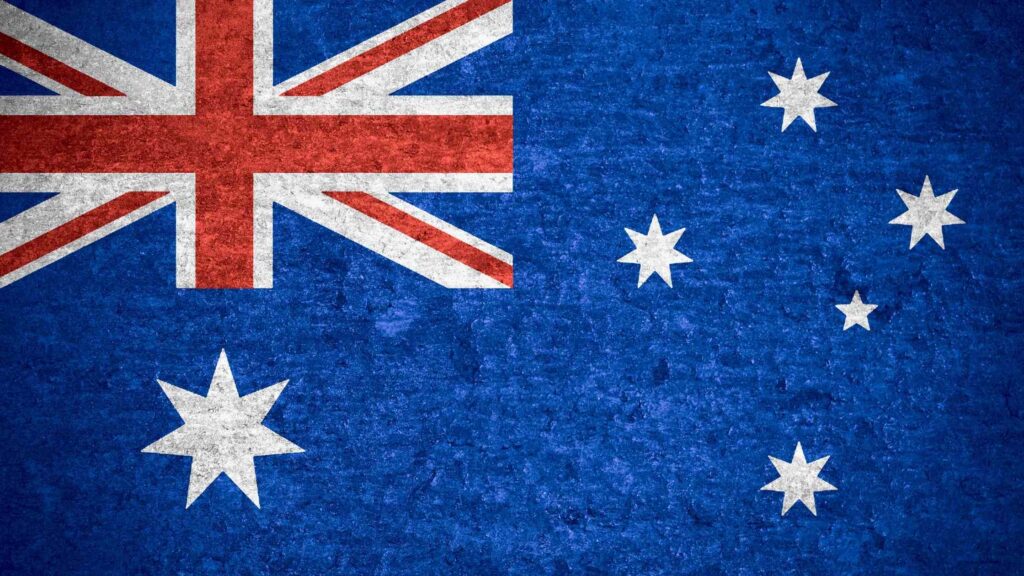
I know what you are probably thinking; “Don’t we go to Tasmania first?”
Even though we tend to think of them as separate entities, Tasmania is actually a state of Australia. And even if they were independent countries, when it comes to Region 5, there is just the one landmass. Tasmania is actually attached to Australia, it is just that at the current ocean levels the connecting land bridge is submerged. The two have only been separated for about 8,000 years. And, if you go back 50,000 years, even lower sea levels created a land bridge between Southeast Asia, New Guinea, and Australia broken only by narrow straits.
The discovery of the existence of that land bridge answered what was just a mystery when I was in school. Where did the Australian Aborigines come from? Lacking the seafaring skills to travel out of sight of land and with Australia boasting the oldest human fossils outside of Africa, there was simply no figuring out how they came to be there. To make it more mystifying, the oldest fossils, the original Australians as it were, are gracile (meaning slender), a characteristic we would define as more “modern” while the more recent fossils and current aborigines are robust (meaning thick bodied) with prominent brow ridges and other characteristics that we have always considered to be more “primitive.” Truth is, the words primitive and modern do not really apply when what we are really talking about is being adapted to the environment.
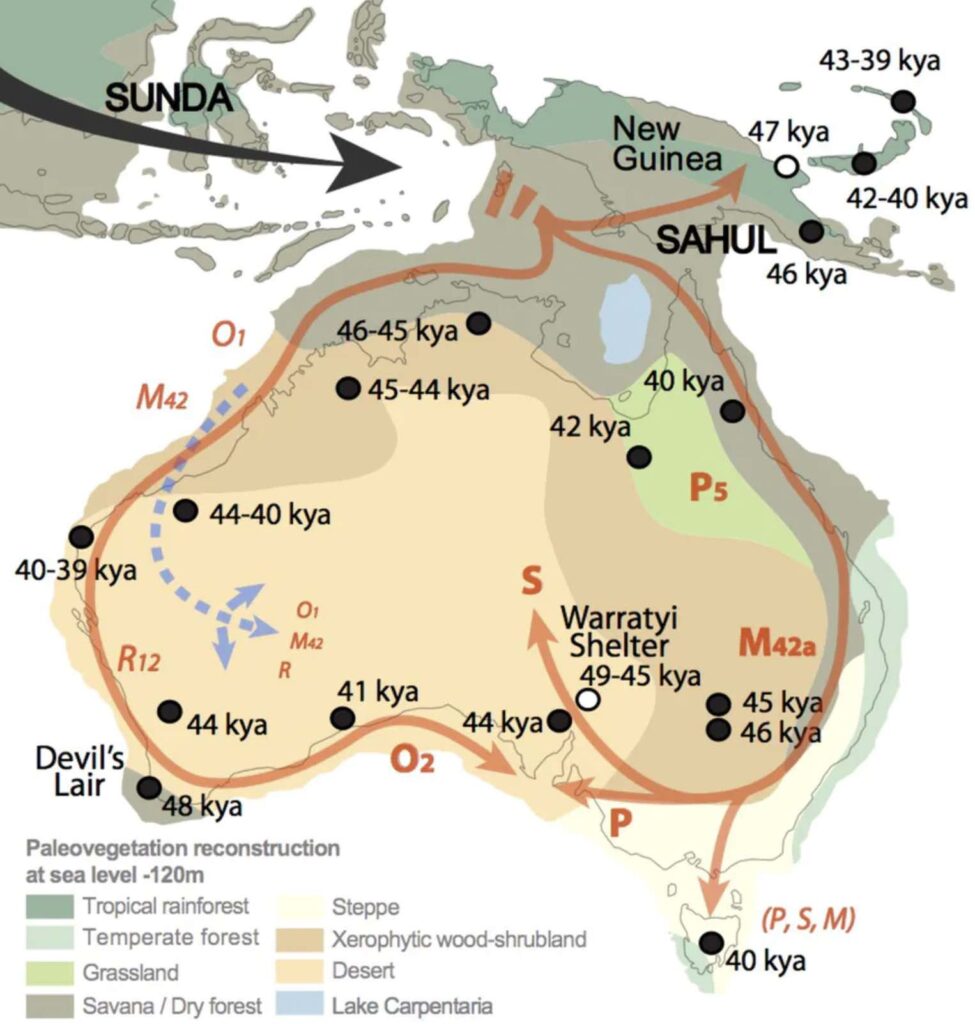
Our new skills with DNA clinched it. There are genetic markers found only in New Guinean natives and Australian Aborigines, and in no other human population. That pretty well proves their close relationship. The first Australians walked there when the sea levels were low. And they were then stranded when the levels rose.
Isolated after the seas rose, the Aborigine culture still made many of the same advancements as humans elsewhere on the planet. Ground edge axes as much as 46,000 years old have been found in Australia. Not only does that predate European ground edge axes by tens of thousands of years, it predates the Europeans. The early Australians were on cutting edge of technology (pun intended).
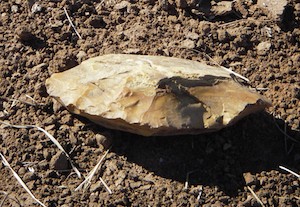
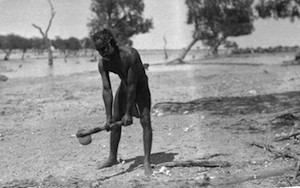
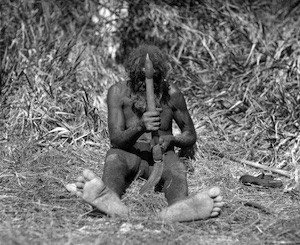
While an environment that could not support a permanent population dictated a nomadic lifestyle, the Aborigines created a variety of tools from the available resources; basically stone, wood, or shell. Smaller tools were carried with them as they moved about their home range, while larger items, such as grindstones, were left on site to be used when they returned. In the more productive areas camps might be used for months on end, while in the arid interior the food supply in a given area would be exhausted in days.
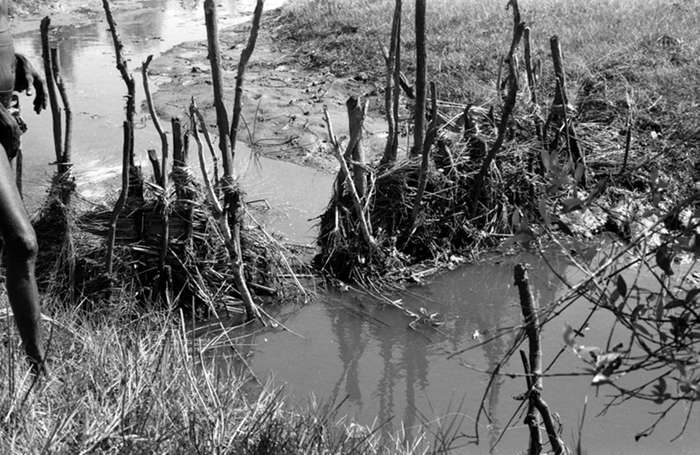
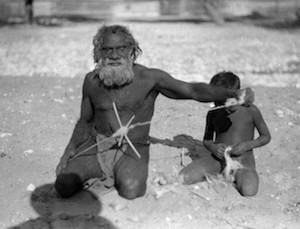
And while they were said to have not developed agriculture, they practiced what is called fire-stick agriculture, using controlled burns to remove scrub and promote the growth of edible ground plants. They also actively planted edible plants, such as native millet, fruit, berries, and even macadamia nut trees. They even transported fish stock cross country and relocated Witchetty Grubs, a primary food source, to new plants. Rather than to plant crops in one location, they manipulated the entire home range to maximize food sources during their travels. In addition to their horticultural ventures they raised possums, emus, and cassowaries.
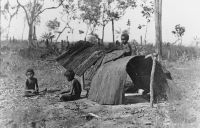
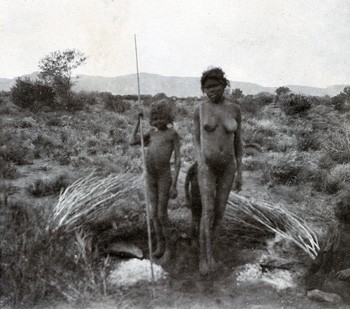
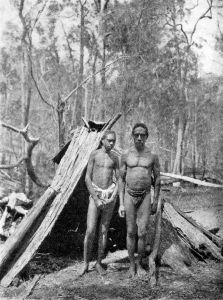
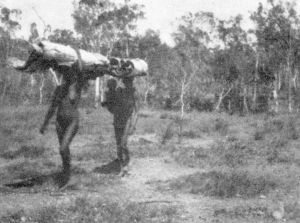
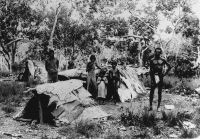
Their one truly domesticated animal is also the only hard evidence of contact between aboriginal Australians and outside peoples prior to the arrival of Europeans. About 3,500 years ago the dingo appeared on the scene. The only way for dogs to have been introduced to Australia was from outside people. Naturally, there soon developed a feral population, which led to the extinction of a number of native species, most notably the mainland population of Thylacine (Tasmanian Tigers.)
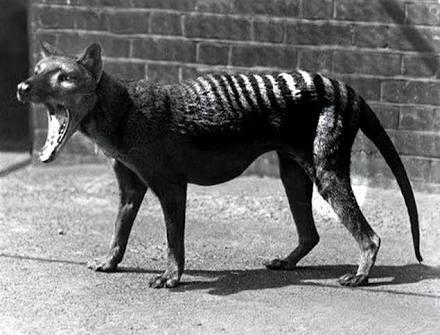
So, when you look at the Aborigines prior to colonization, they were far from a primitive collection of vagabonds scraping a living out of the wilderness, but rather sustained a sophisticated system of maintenance that allowed them to live in an inhospitable environment that simply lacked the resources to support permanent settlement. Much like our misapprehensions about their physical appearance, we far undervalued the culture they had developed. They were truly living in balance with their environment and were able to cope with almost any challenge. Unfortunately they were not equipped to deal with an invasion by an aggressive and well armed invader… and smallpox, influenza, measles, tuberculosis, and STDs. If this spurs an interest in learning more, there is actually quite a bit of material available about these remarkable people.
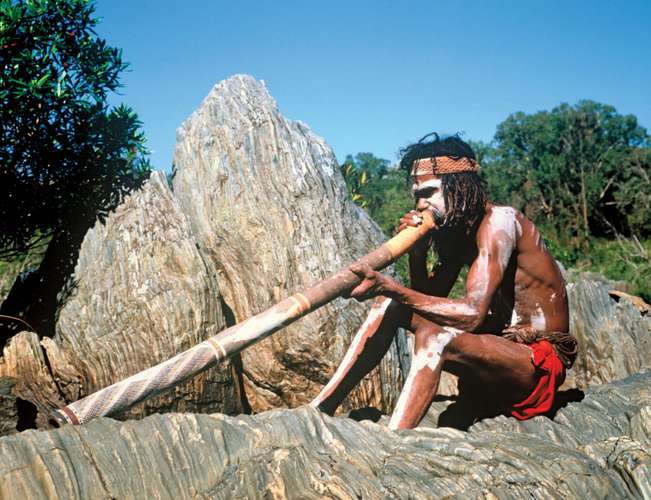
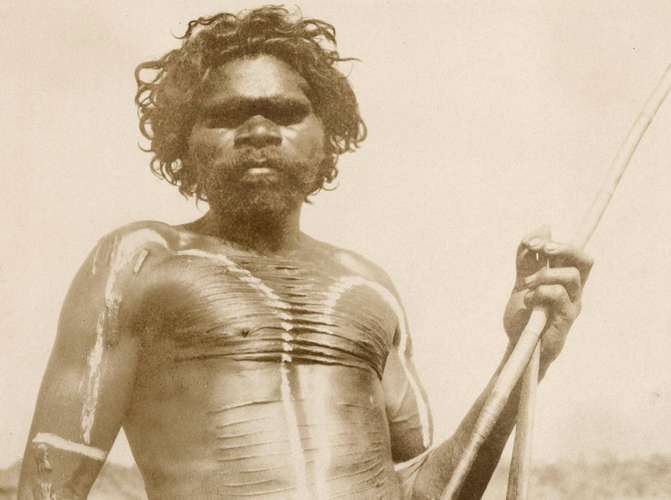
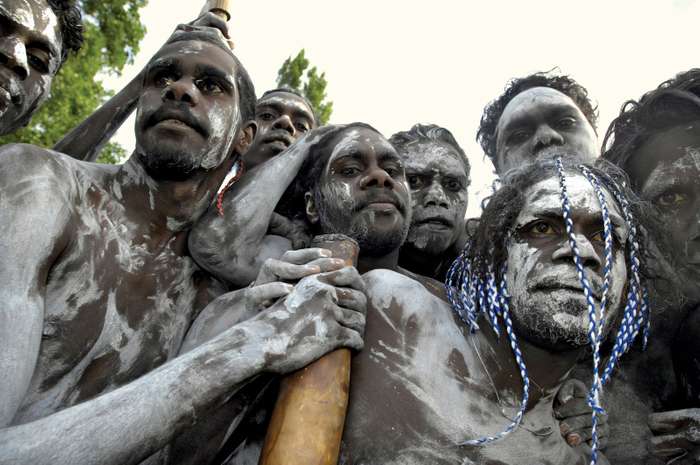
When most people think of Australia the first thing that comes to mind (besides kangaroos) is flat. And that is a fair image to have, because most of Australia is indeed flat. In all of our travels up until now, we have been crossing continents that were in violent contact with other continents. Mountain Ranges were being pushed up or forming from the volcanism created by these collisions. Australia, on the other hand, is a product of a continent not involved in violence. It is the picture of stable land. There is minimal seismic activity. While the remains of volcanoes exist, there are only two semi-active volcanoes that exist over a “hot spot” in the mantle. It has been slowly eroding away. Mountain ranges formed during its long ago involvement in the supercontinent of Godwana are mere remnants. While the basins in the interior of the continent have been accumulating sediment, the higher portions have eroded for many millions of years, in places clear down to the craton. Australia is so flat, and rides so low, that when sea levels have been higher than today, much of it was an inland sea.
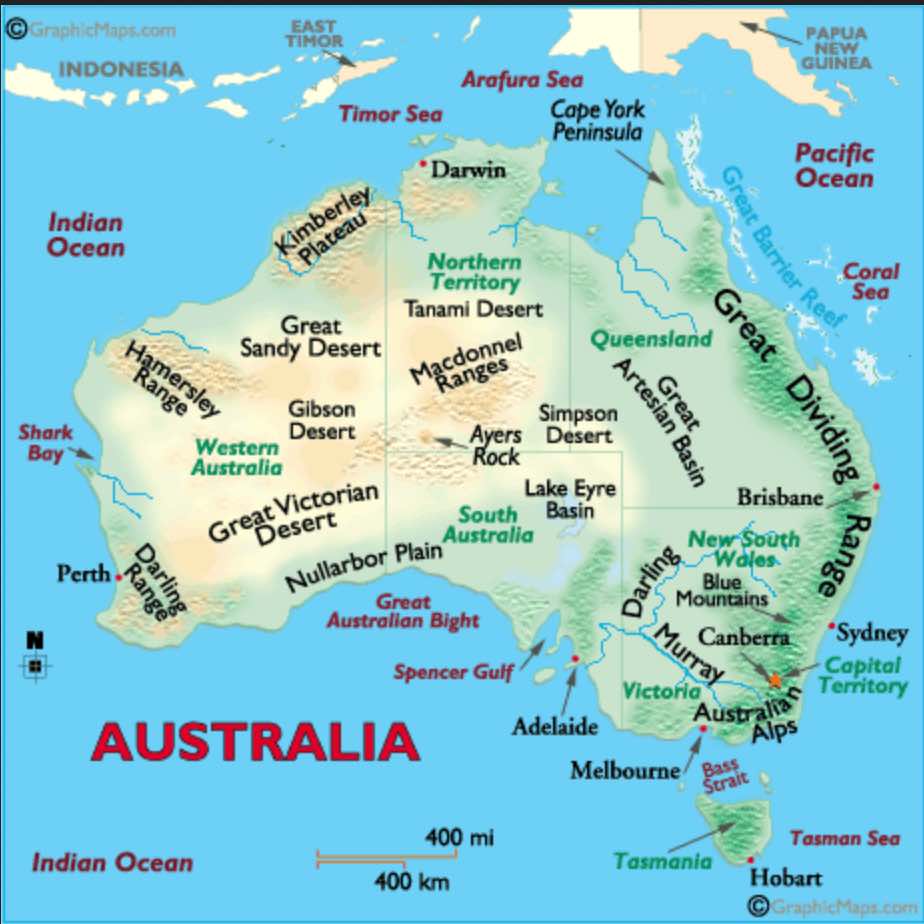
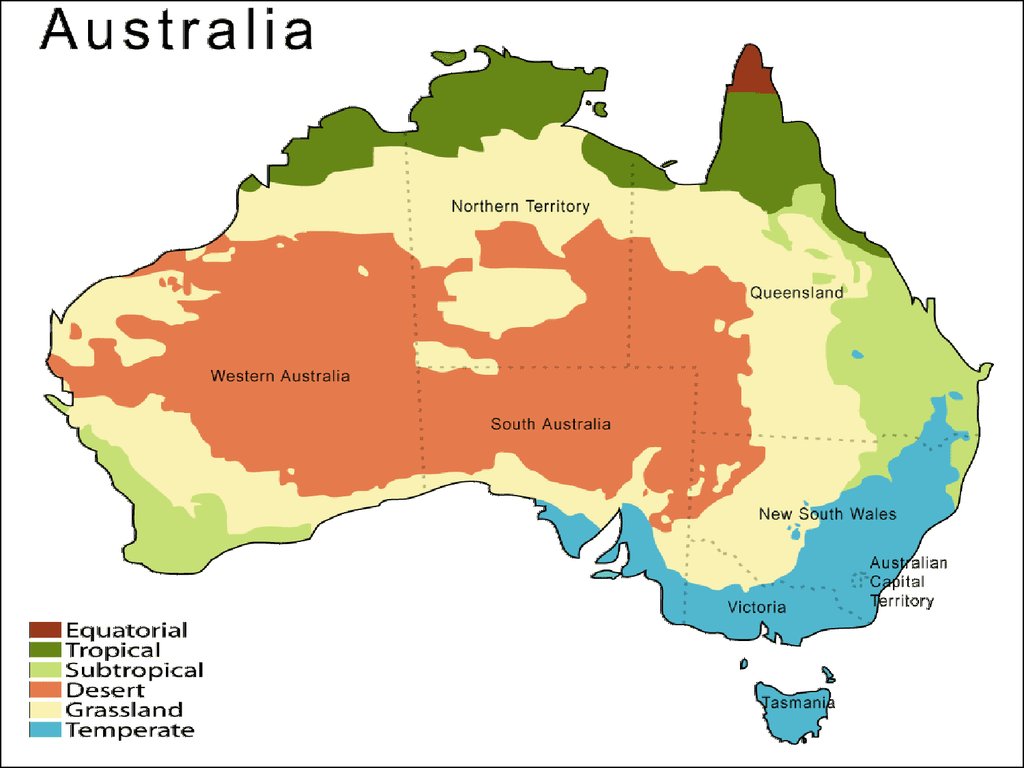
The one exception is on the eastern edge of Australia, where the Great Dividing Range of mountains separates the narrow coastal strip, where the rivers flow into the Pacific, from the rest of the continent, where most rivers flow into the interior. Actually, the entire eastern edge of the continent has been uplifted. With the lack of tectonic influence, these mountains and the uplift were long a puzzle. But today we know how they formed. As Australia drifted away from Antarctica it slowly crossed an upwelling in the mantle called the South Pacific Superswell. As it did so, the eastern part of the continent was pushed up, forming the Great Dividing Range, and ultimately splitting off New Zealand from the eastern part of Australia.
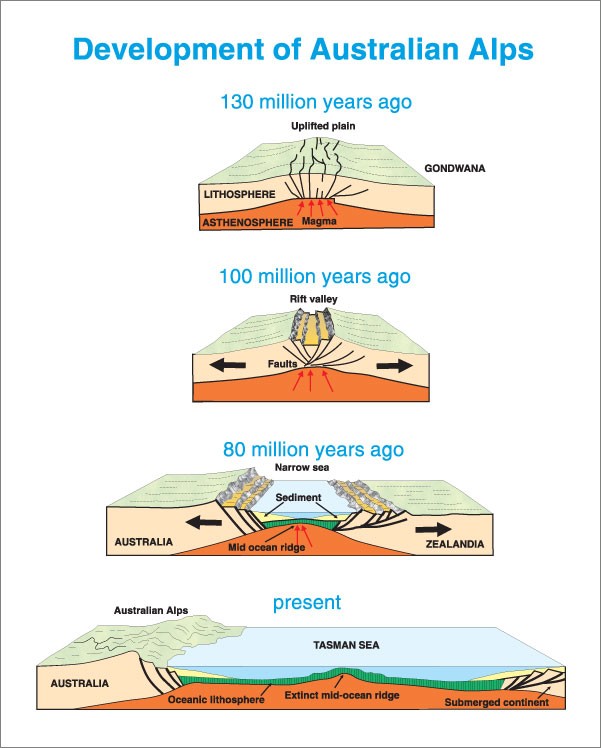
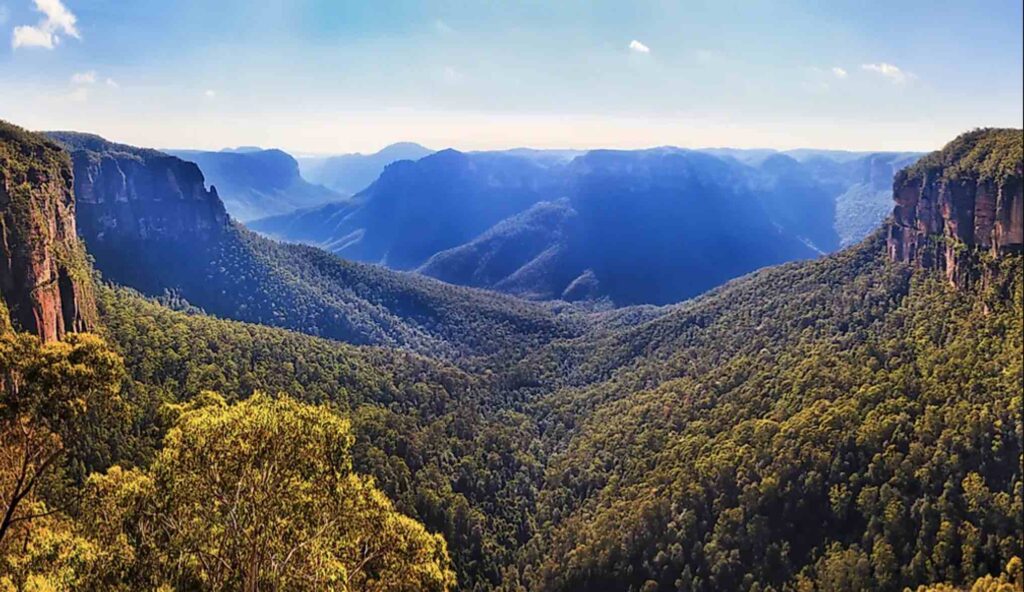
This is all important to know when you land on the southern tip of Tasmania, because in Tasmania you will be crossing one of the most mountainous islands on earth. That may not seem to make sense, when we started by telling you that Tasmania is actually part of Australia. And you know that Australia is flat! Tasmania is not part of the flatness of Australia. It is the extreme southern end of the Great Dividing Range.
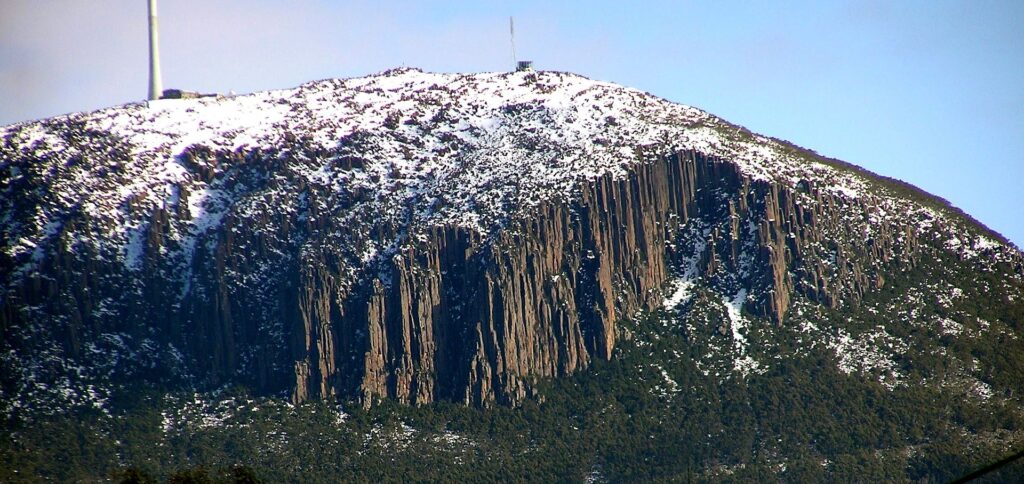
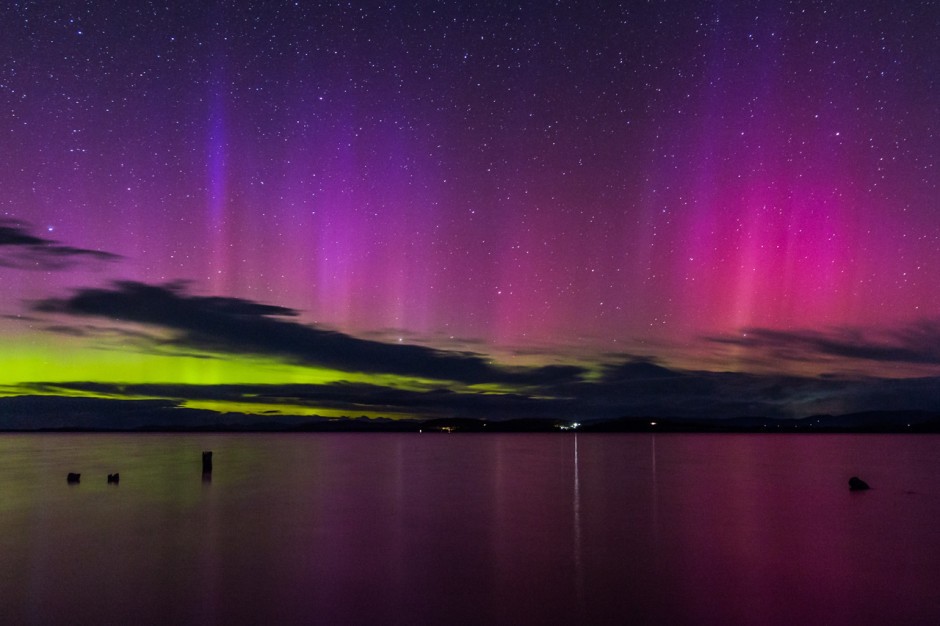
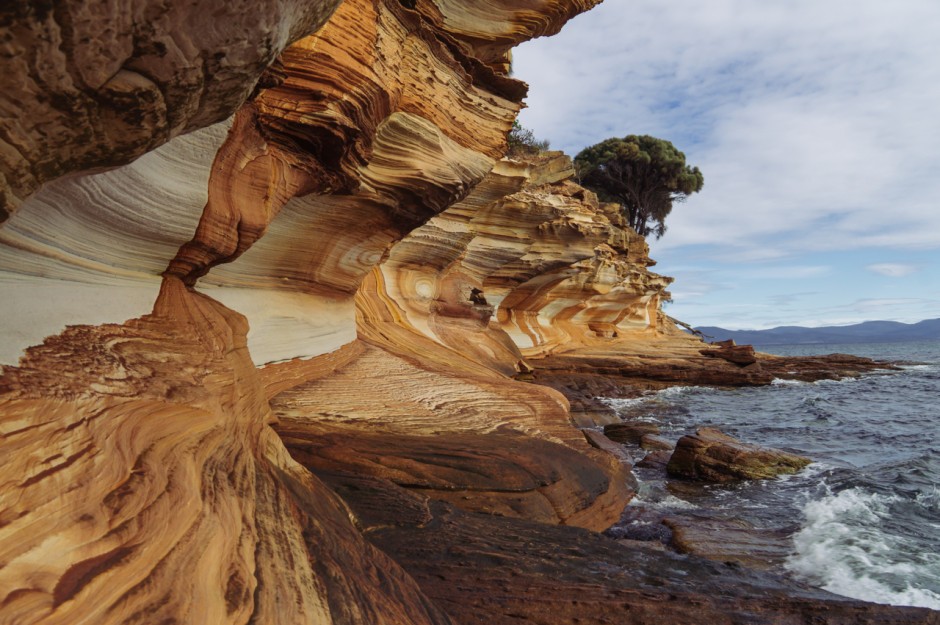
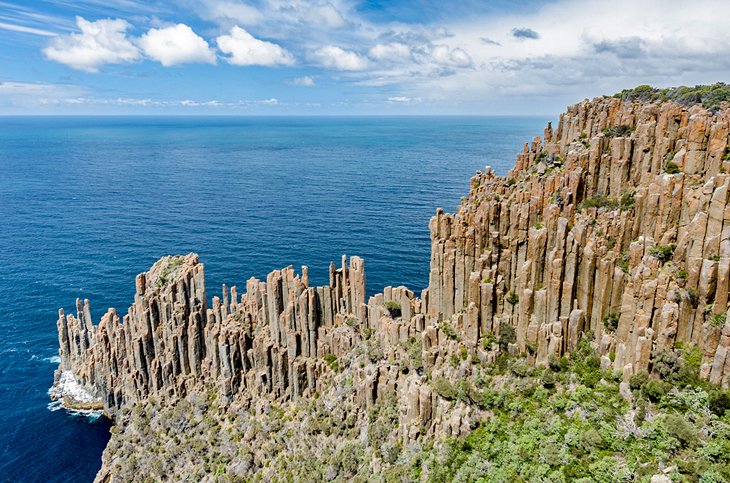
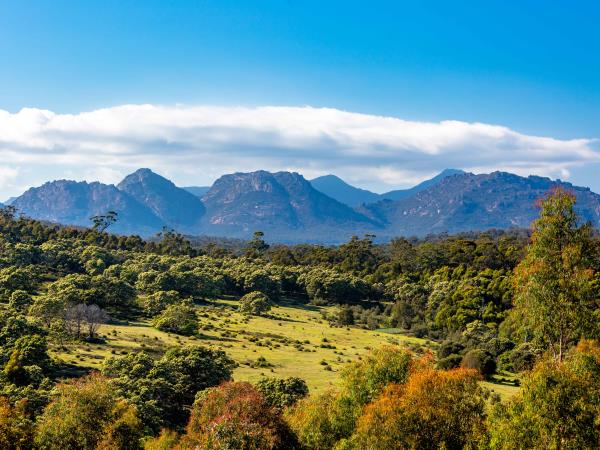
The history of Tasmania is a microcosm of the history of Australia. Rightfully it begins with the aboriginal inhabitants. With the Down under existing in isolation from other humans for somewhere between 50,000 and 80,000 years, the culture that developed was not quite like any other. Yet, being humans, this development was driven by the same impulses and needs that are common to the entire species.
When Europeans arrived down under, what they saw was an amorphous wasteland inhabited by naked savages. The only part of that which was true was the naked part. Every square inch of the land was owned.
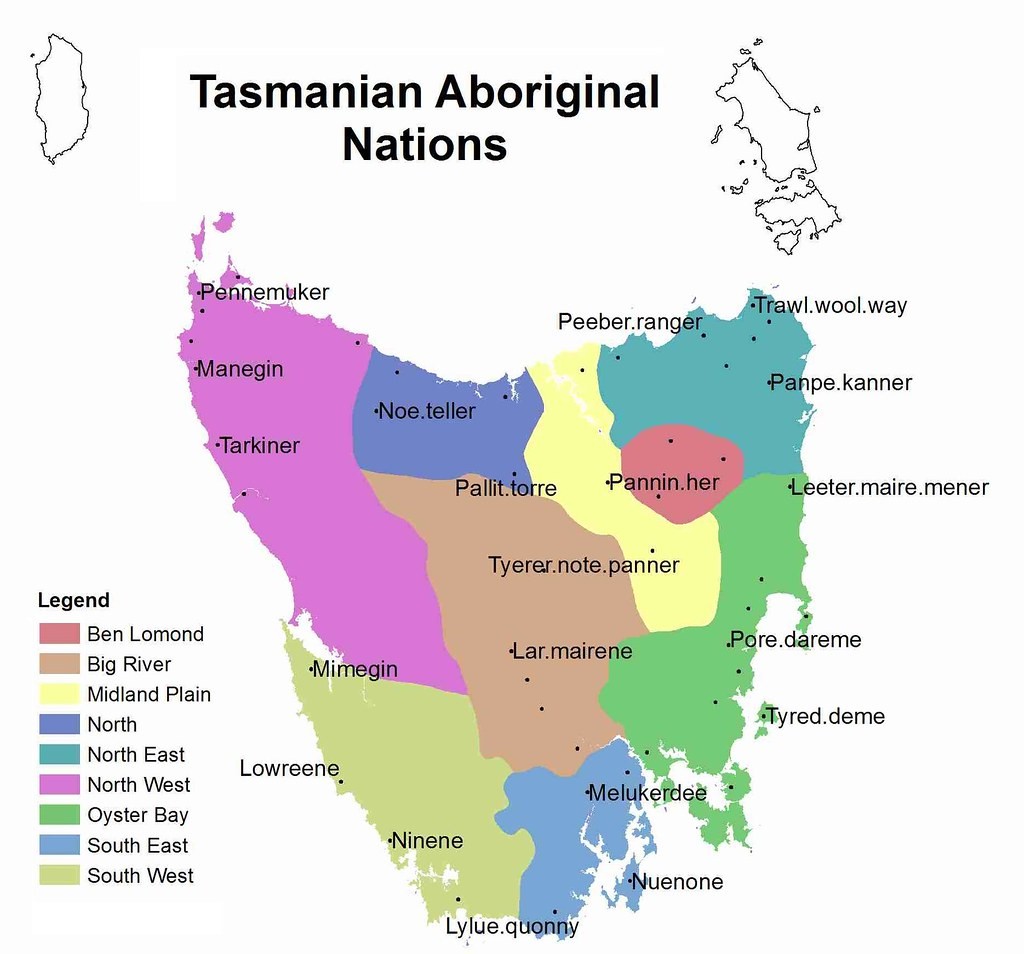
And while it was not apparent in a traditional sense, every square inch was “cultivated” to provide food for the population. For the aboriginal people religion, law, and social structure were one and the same. In their world those things all existed in a continuity, and life was lived according to strict rules. The ownership of the land fell to tribes. The tribes were broken down into bands. And the bands further subdivided into families. For certain ceremonies large gatherings happened, but most of life was spent moving around the property in the small family bands both harvesting and cultivating the land.
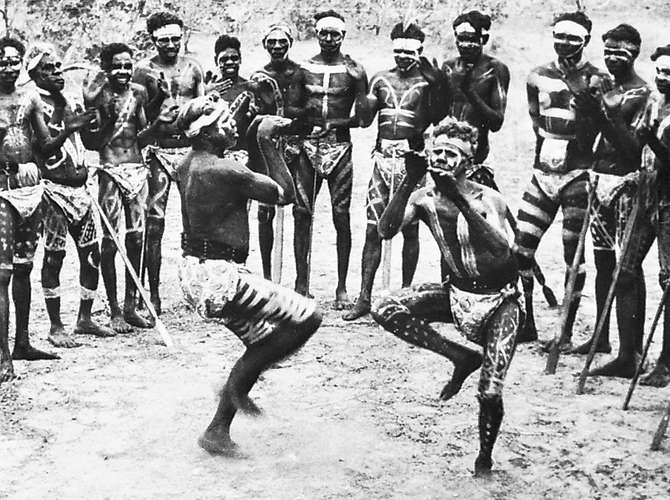
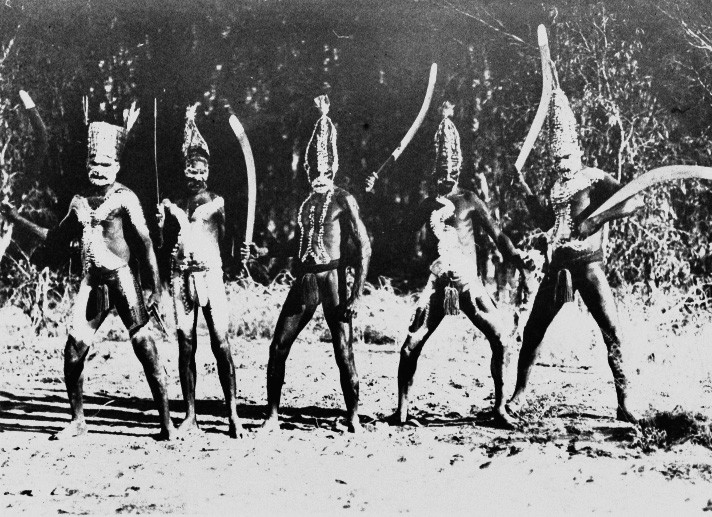
Into this orderly existence came the strange people from across the ocean, disregarding laws and customs, appropriating the land from its rightful owners, indiscriminately harvesting food that belonged to someone else, and with little regard to the people who lived there.
Tasmania was the last aboriginal land to be invaded, and as they had elsewhere, the native people resisted to the best of their ability. But, where the mainland population had probably been around a million, there were only 7-10,000 inhabitants on Tasmania. Theoretically, the inhabitants of lands claimed by Britain became subjects of the King, entitled to the same legal protections. In practice it worked out very differently. And, from a practical standpoint, there is no peaceful way to displace people from their homes, eat or destroy their food sources, and leave them no way to exist.
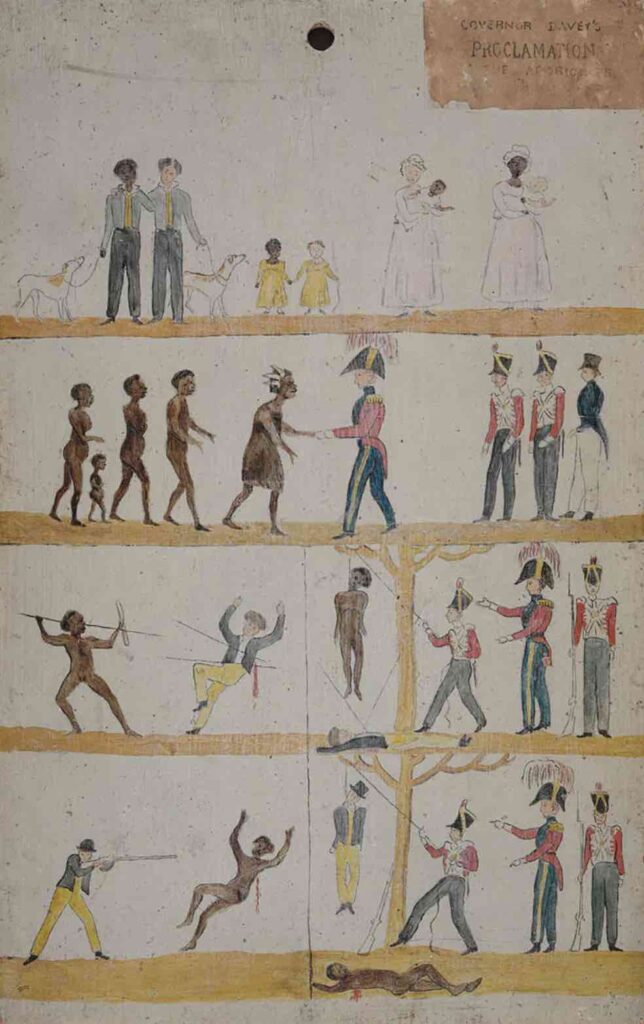
The first British colonists arrived in 1803. The first convicts were sent there from Australia in 1804. Tasmania, then known as Van Diemen’s land, was primarily used as almost a secondary punishment for those who were being punished again for crimes in Australia. By 1828, relations with the native inhabitants deteriorated into full scale war. The war was over in 1832, with the Tasmanians naturally losing. In 1833 the last surviving 200 or so free native Tasmanians surrendered with the assurance that they would be provided for, and eventually their lands returned. In 1835 there were only 400 Tasmanians surviving in internment camps on Flinders Island, which over the next 12 years declined to only 47 survivors. In 1876 the last native Tasmanian died.
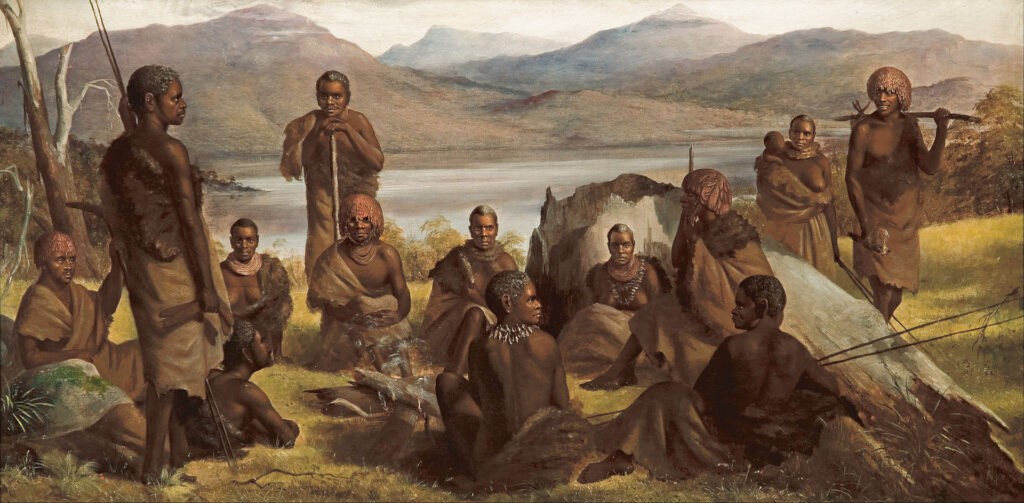
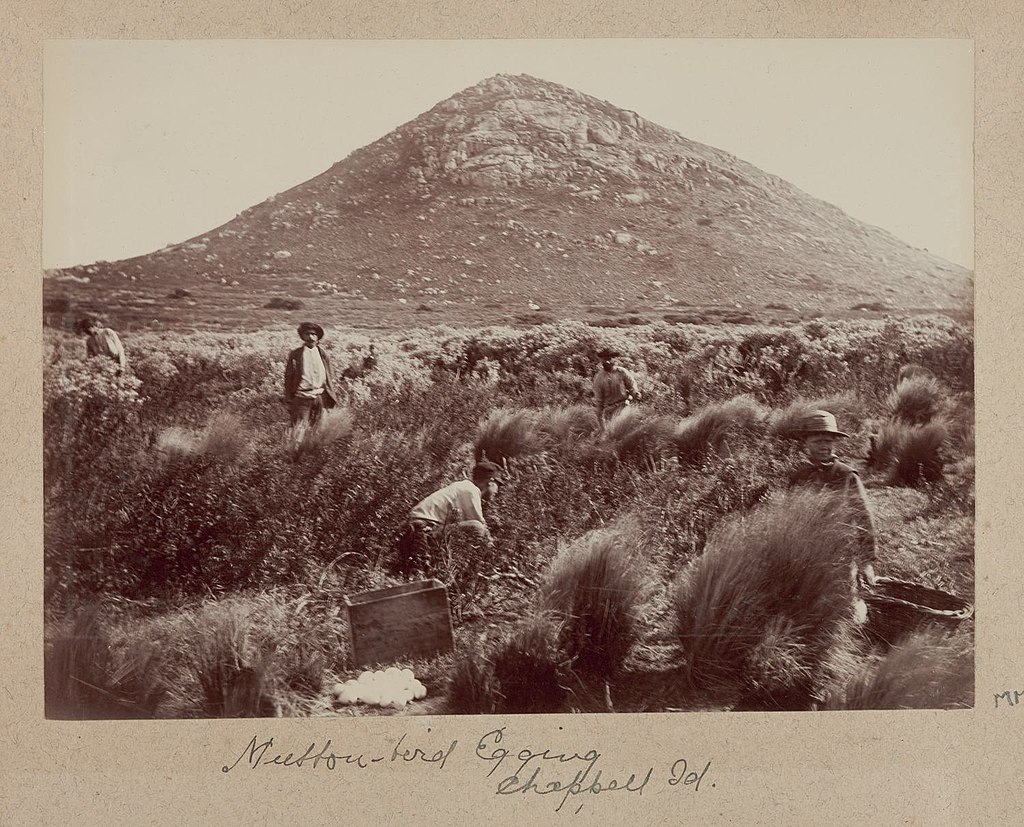
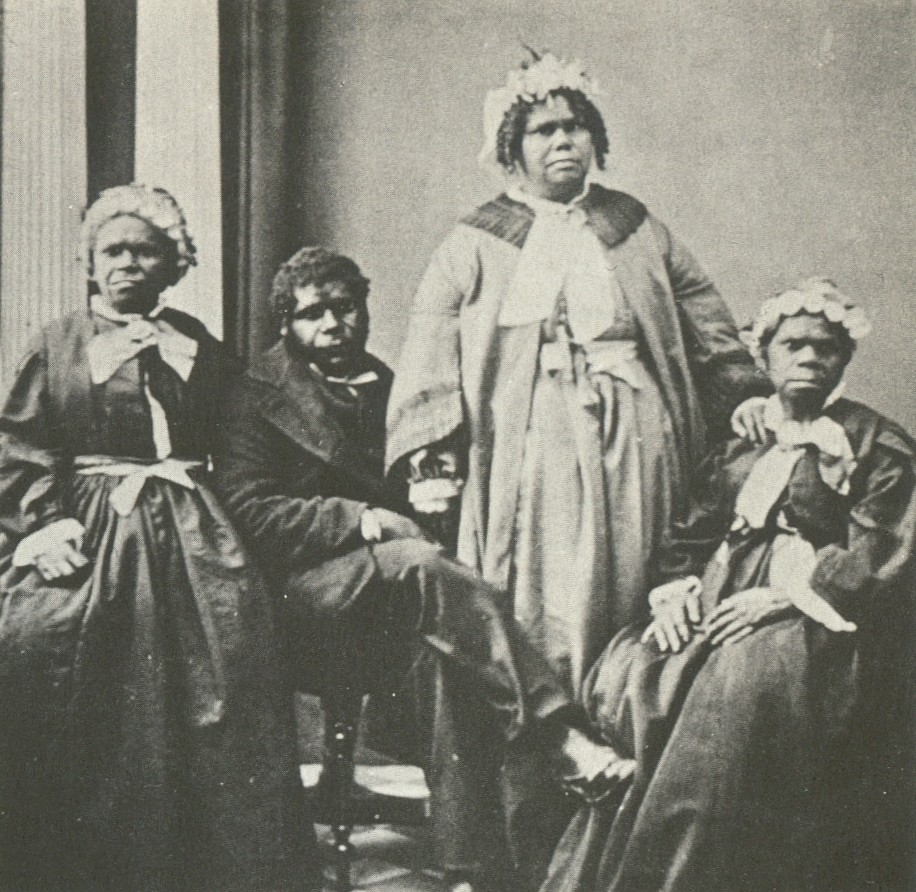
Of course, this does not mean that the genetic heritage was extinguished. There were many children born with a European-Aboriginal lineage. Actually, that was one of the proximate causes of the war. British colonists and convicts were predominately male, and most had no contact or access to female companionship. Many turned to the Aboriginal population with less than chivalrous intentions. Today thousands of people boast an ancestry of indigenous Tasmania. Only the culture and the languages are lost forever.
In Australia, with much more territory and a larger population, the “wars” lasted a lot longer, but the end result was much the same.
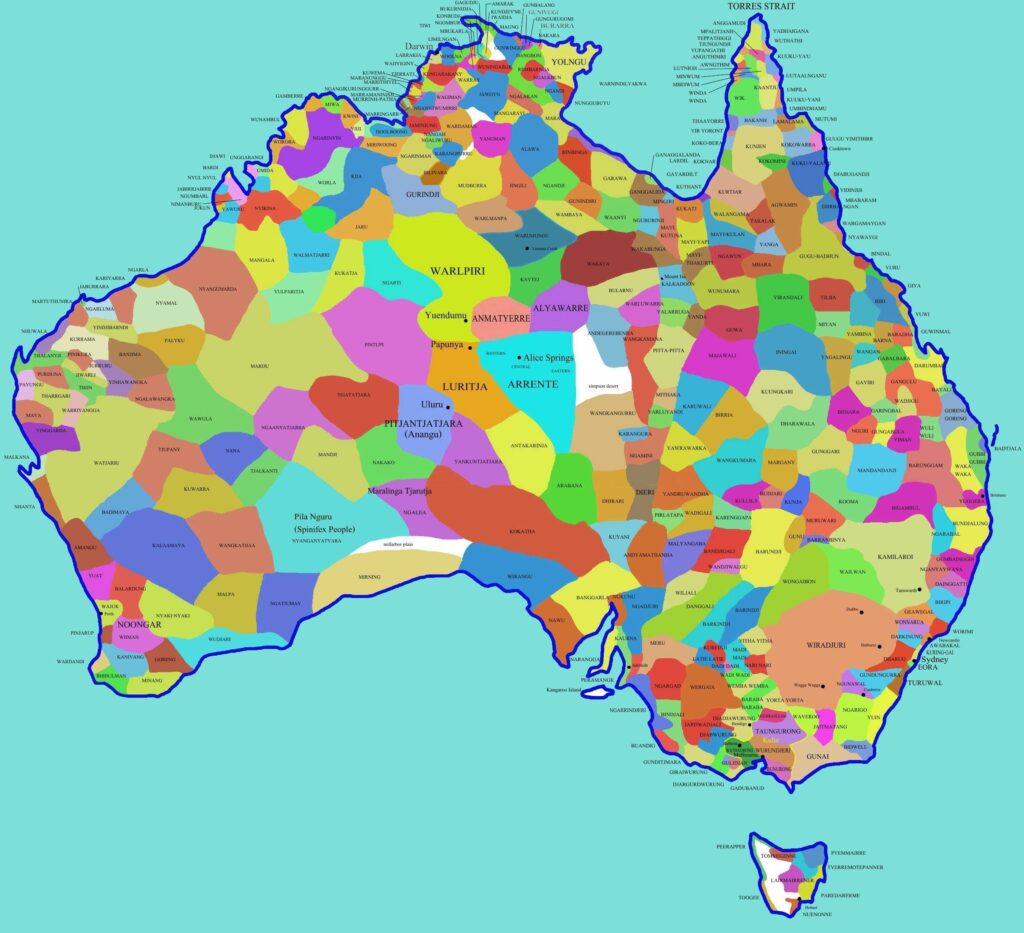
The Aborigines were particularly ill prepared to mount a resistance. It was not that they were a peaceful people. They engaged in war with one another.
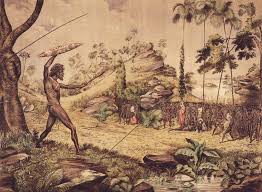
But, their religion/culture was very much based on a connection between the people and the land. The concept of gathering an army and taking territory was completely foreign. There would have been no purpose to conquering land that was not theirs. They had experience with ritual warfare, fought for prestige. They engaged in revenge killings and raids on other tribes. Not only did they not have a tradition of warfare in the normal sense, they had no tradition of leaders. There was no head man in charge, as they simply lived according to the formulas established in their belief system.
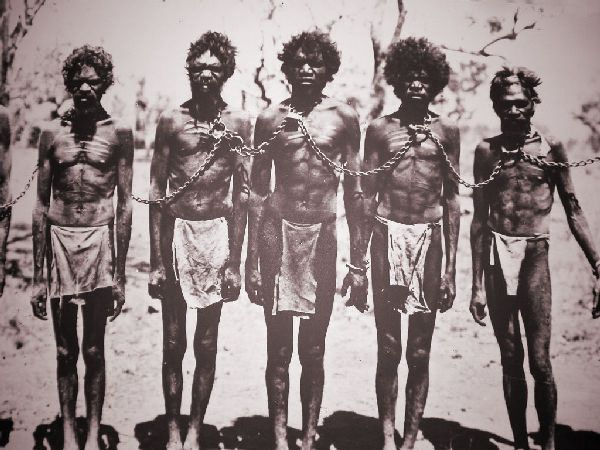
To give the Aborigines credit, they did manage to adapt enough to form alliances between tribes and fight in numbers on a few occasions. Unfortunately, the difference in weaponry rendered the outcome of these engagements certain. However, the predominant form of native resistance, both on the mainland and in Tasmania, took a uniquely Australian form. The Aborigines attacked what they well knew was the weak link in occupying Australia… food. They waged a fierce war against the Englishmen’s livestock. They were apparently more interested in making the invader leave than in killing them.
After the subjugation of the native peoples, the Australian history gets a little weird. Altho Australia began as a collection of colonies, independence was the obvious next step. And in 1901 legislation was passed, enabling the six colonies to form the Commonwealth of Australia. It had taken years of effort and several referendums, but Australia was independent…. sort of.
At least after World War I it became increasingly difficult for Britain to control “independent” Australia. The issue was finally settled with the Balfour Declaration in 1926 that Australia (and some other colonies) was a completely independent country…. sort of.
It seems that, like a mother reluctant to let go, continued to run foreign affairs for Australia. When England went to war with Germany, Australia was at war as well. In 1942, with the passage of the Statute of Westminster Adoption Act, Australia (which had only been recognized as a country by the US in 1940) was finally able to run her own foreign affairs. At last, independence had been achieved… sort of.
It seems that it was not until 1986 that the Australia Act eliminated British authority at the federal level. That would have to mean that Australia was truly, once and for all independent… right?
Well, it seems that Australia remains a Constitutional Monarchy, and their royal head of state is guess who… yes, Queen Elizabeth. But don’t worry, surely another Independence Day is in the works.
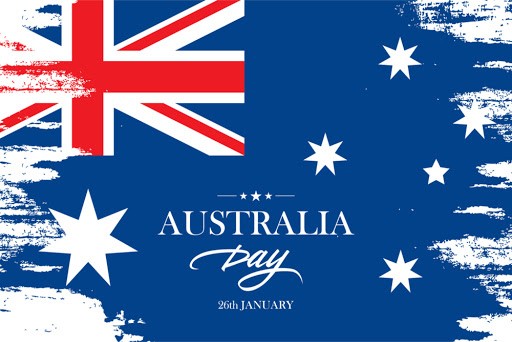
Only in Australia can Independence Day be celebrated four times a year: January 1 (from the 1901 independence), March 3 (the 1986 independence), October 9 (the 1942 independence), and November 22 (the 1926 independence). Be sure and bring plenty of fireworks for your trip thru Australia.
Of course the part of Australia that people find most fascinating is not the geology or the history… it is the wildlife. What Australia is famous for is its array of marsupials and monotremes. Marsupials bear extremely premature young, which then develop in a pouch. Monotremes are even more “primitive” mammals that actually lay eggs.
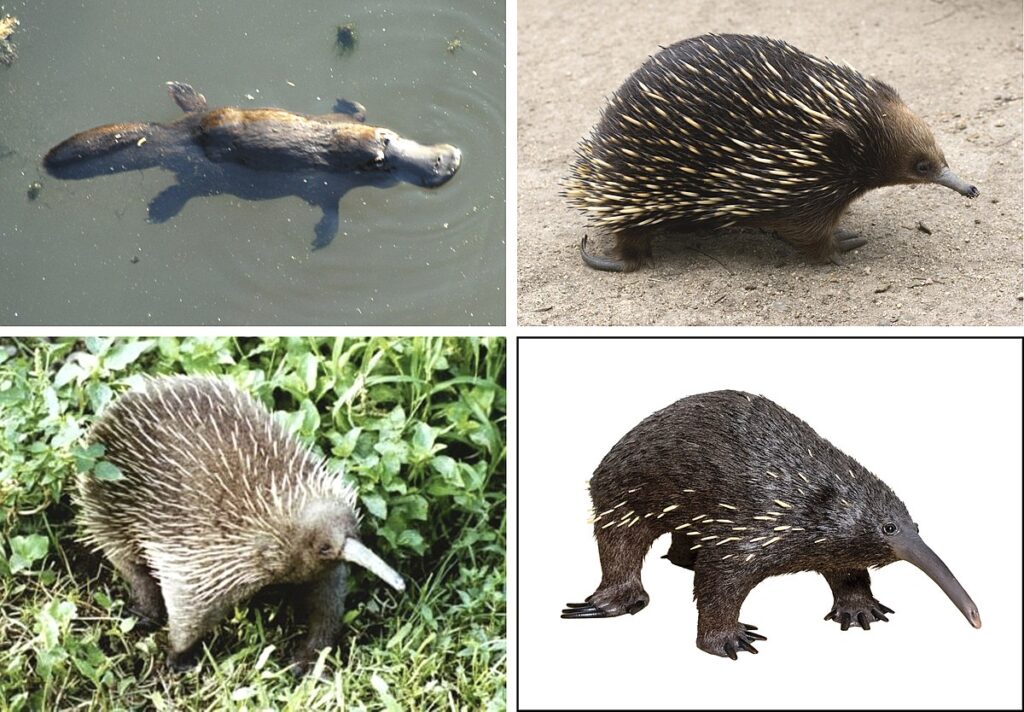
Monotremes, and then Marsupials, were the earliest forms of mammals and evolved in North America. These early mammals then took their own Circumpolar journey, and these marsupials and monotremes spread across the then connected South America and then crossed Antarctica to Australia, and then on to the rest of gondwana.
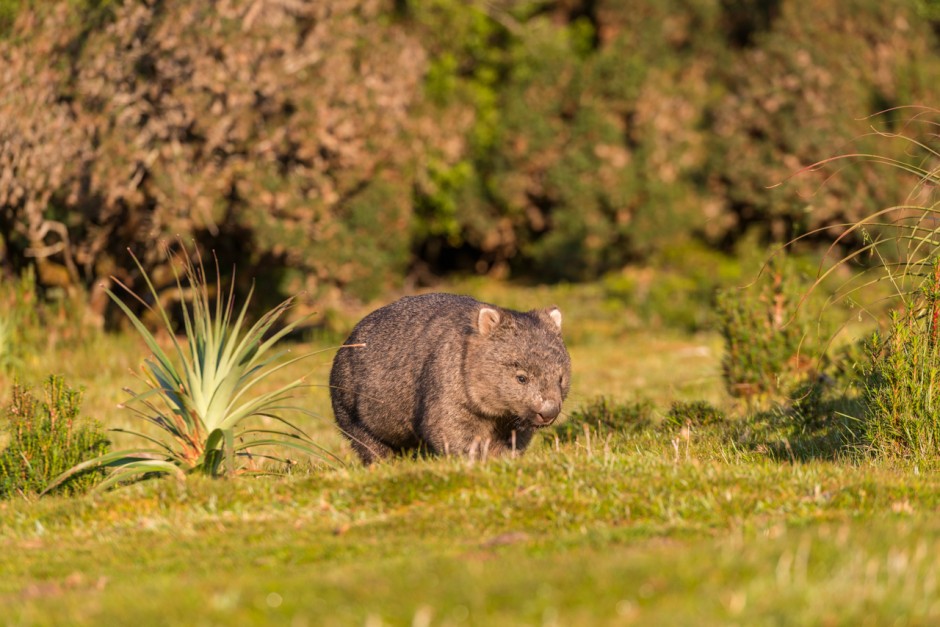
As the various continents began to split apart and drift off each had only the animals that it had. While Australia and South America saw a flourishing of the marsupials, off in the northern hemisphere a new type of mammal evolved; the placental mammals. If you want controversy, we have got it for you. The world is divided into two groups of people; those who rely on the math that measures the rate of genetic change, which indicates that placental mammals developed about 90 million years ago, and those who rely on the fossil record, which only shows the first placental mammals about 65 million years ago. As you can well imagine, feelings run hot over an issue like this, and members of the opposing groups can scarcely be facebook friends.

This controversy mattered little to the marsupials of Australia and South America, which were separated from the continents of the northern hemisphere by 93 million years ago, wheterh placental mammals evolved 65 or 90 million years ago, the marsupials of South America and Australia were safe.. Both developed an array of unique animals; those in South America equally if not more unusual than those in Australia. Meanwhile, the placental mammals continued their spread, eventually reaching the mammals’ starting point and displacing the marsupials that were still there. When North America swung around and ran back into South America, the new placental mammals swarmed in and displaced almost all the marsupials. The surviving marsupials in South America are either varieties of the opossum, or very similar forms. As a matter of fact, the opossum was such a successful design that it went the other way, with what has become the common Virginia Opossum colonizing most of North America. Then, during the last century the armadillos have followed the opossum’s lead.
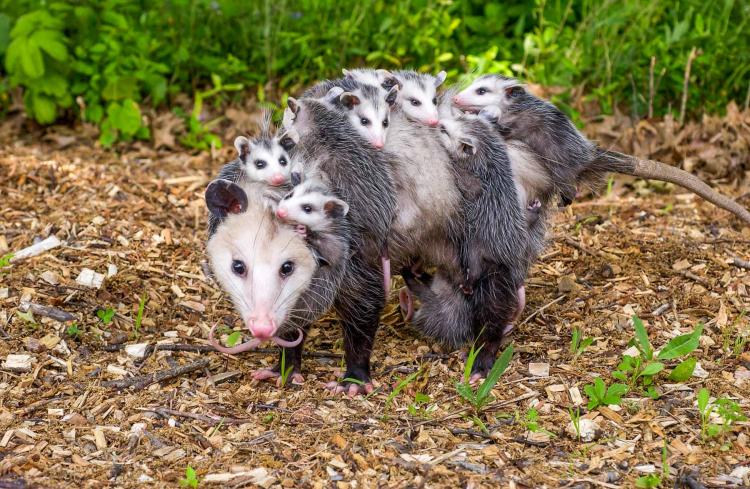
Just like the form of the continents, the distribution of animals is an ongoing process. Young people from Texas to Florida probably think that armadillos have always been part of the fauna. Truth is, they did not reach Texas until the 1870’s, and the first sighting in Arkansas was not until 1921 and Oklahoma in 1930. They reached Tennessee in the 1980’s and are now the most common roadkill.
Anyway, back to Australia; although it is hard to shake that image of a tidal wave of mammals beginning in North America and sweeping around the world (just like the CRAW runners) and arriving back in North America and moving on to South America when the continents collided with a new and improved model that overwhelmed the originals. Thanks to not colliding with any continents harboring placental mammals, Australia still has an amazing array of unique Marsupial forms. But there has been a leakage of the new mammals. Australia cannot stay frozen in time forever, nowhere can.
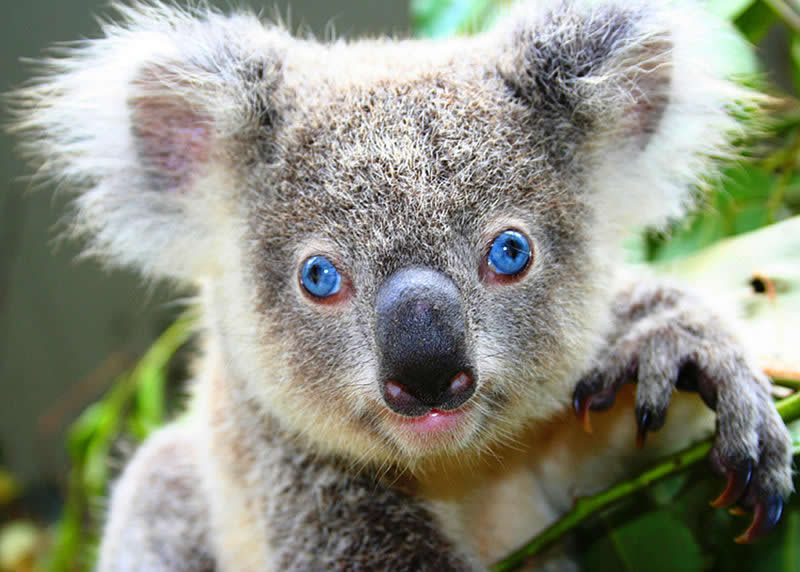
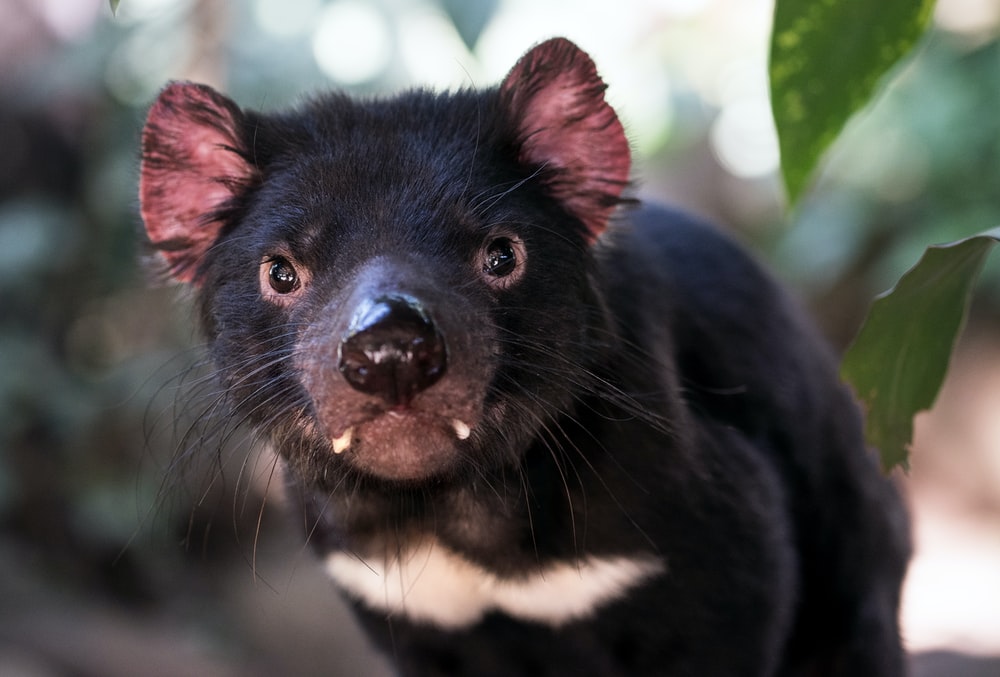
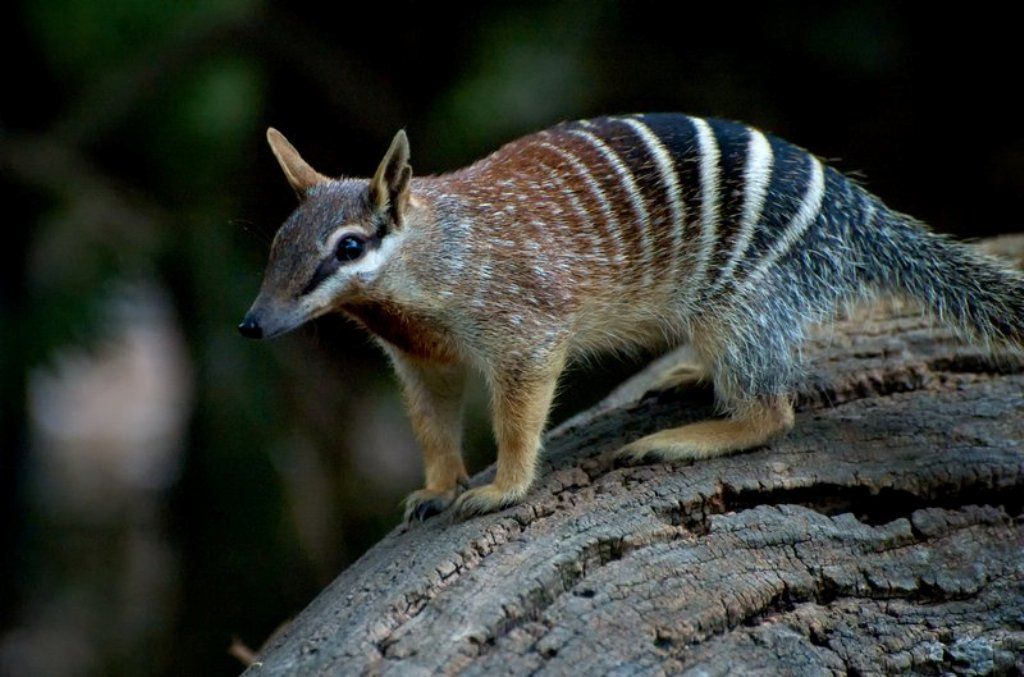
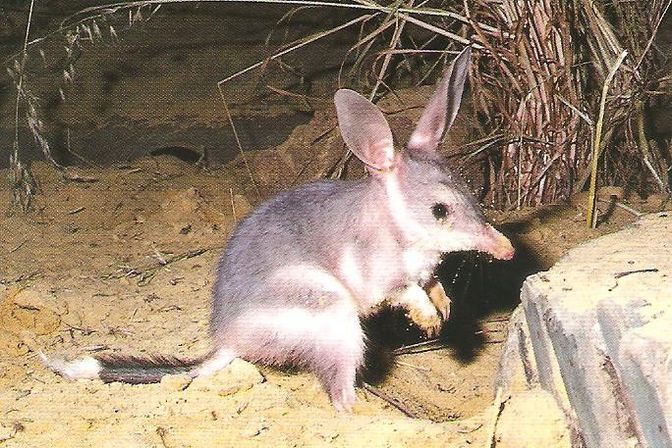
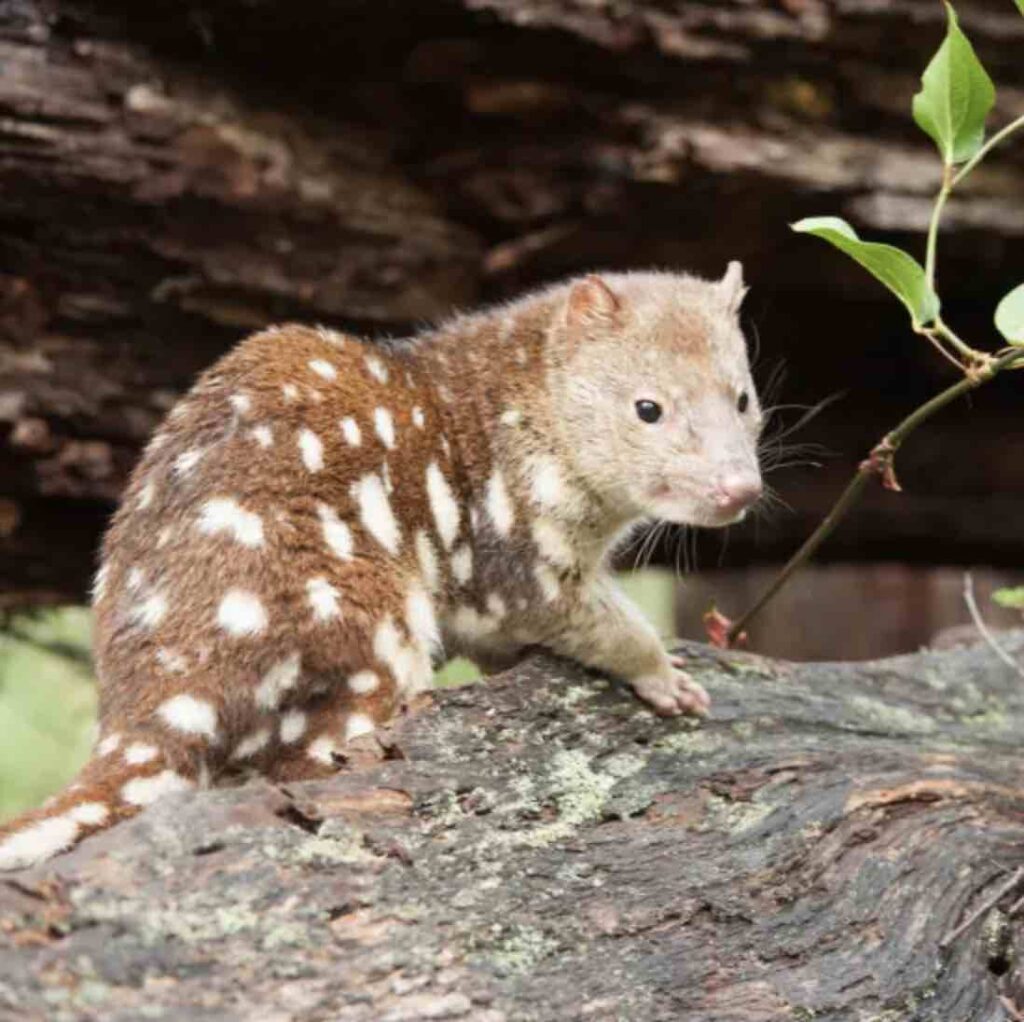
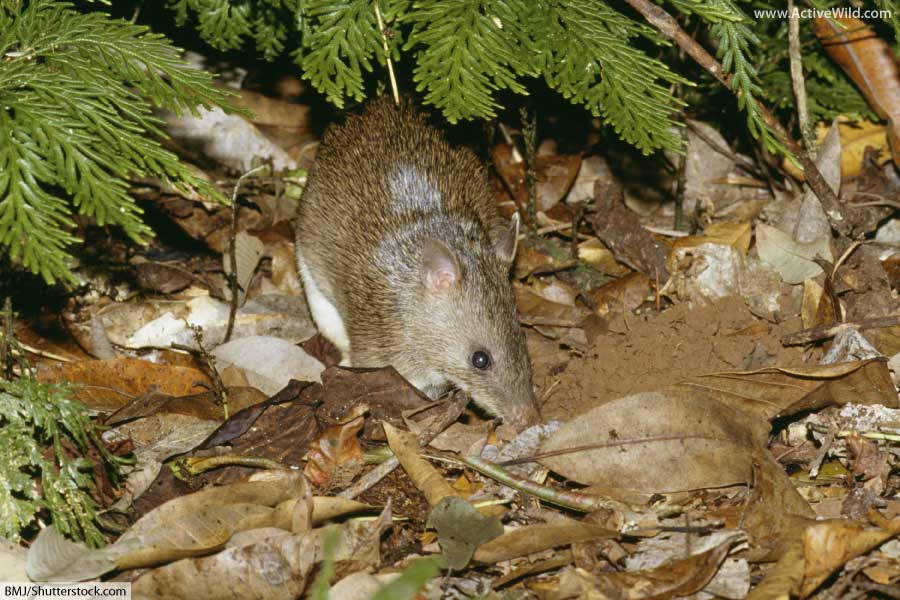
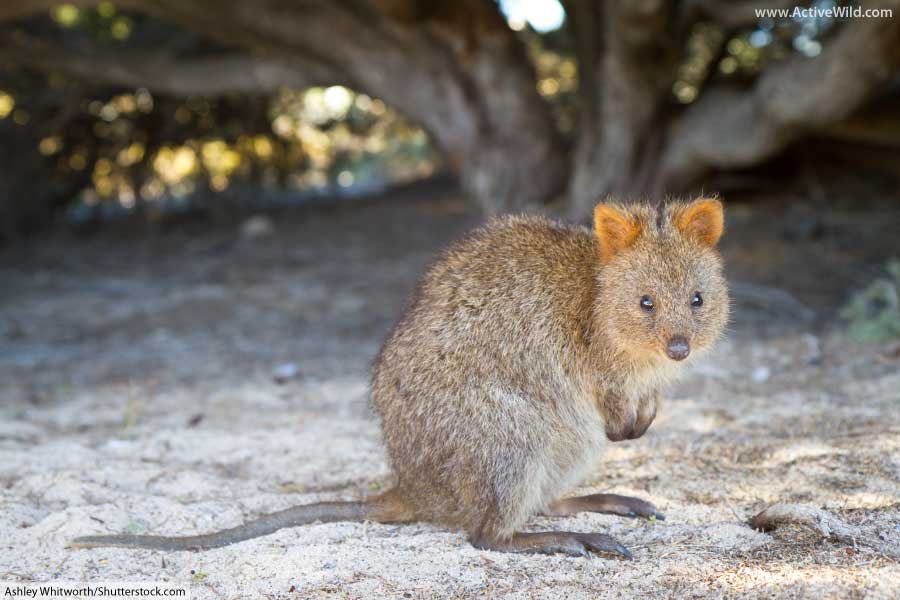
The first placentals to arrive were humans, and while there is still debate as to whether the cause was climate change or human impact, a wave of extinctions of the large Australian Fauna soon followed. The next invader was the Dingo, brought in by humans. Another wave of extinctions followed. Most notable of those was the mainland population of the Thylacine, a wolflike marsupial that was the last in a line of once dominant predators when marsupials ruled the world. The last wave has been brought by the Europeans… rabbits, foxes, camels, pigs, and rats. The placental mammals have completed their lap around the globe, and it remains to be seen how many of Australia’s marsupials can hold on to their place.
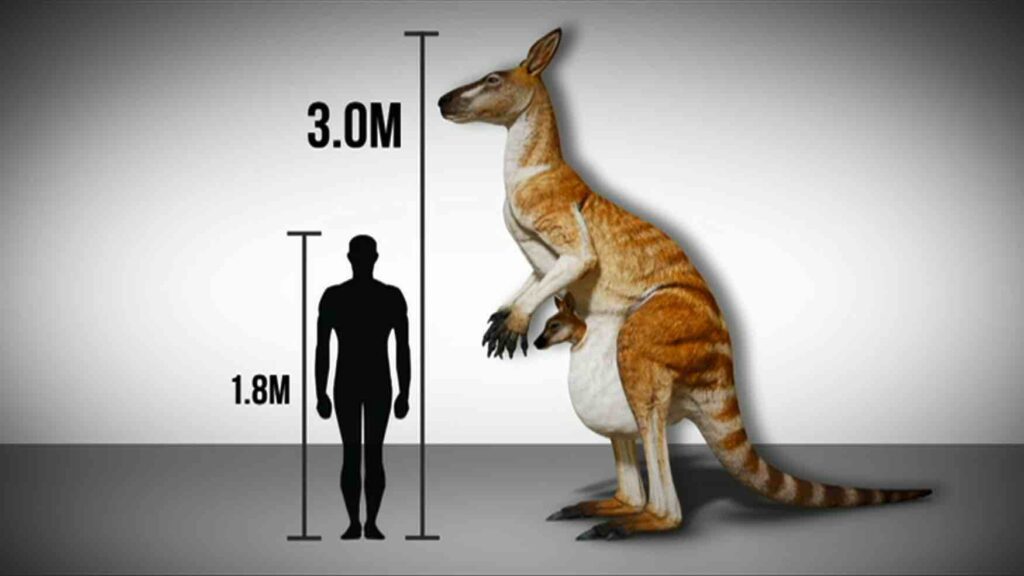
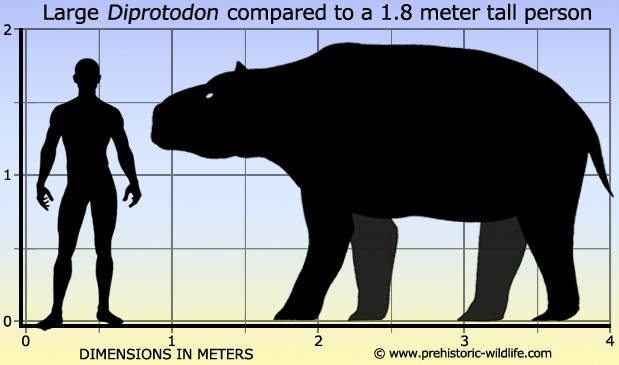
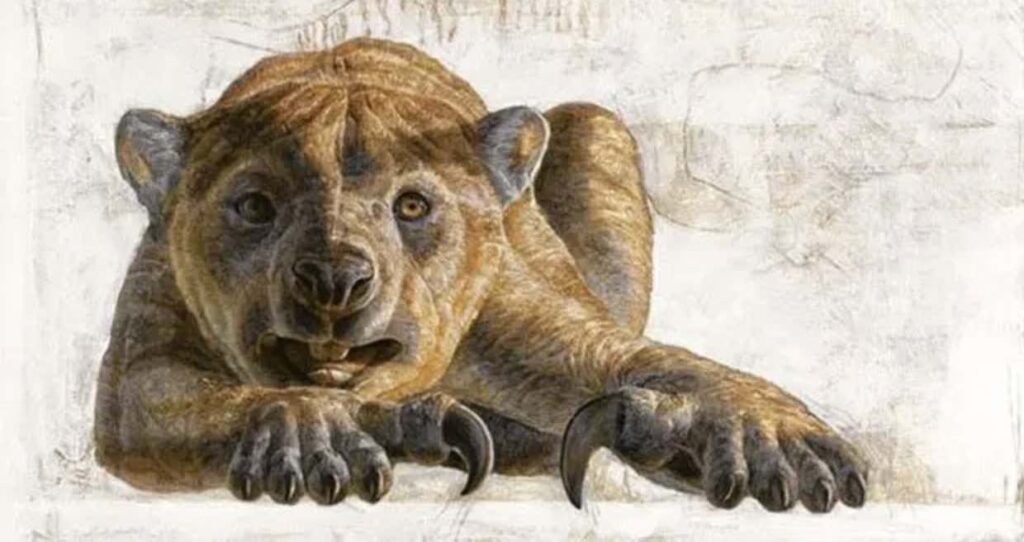
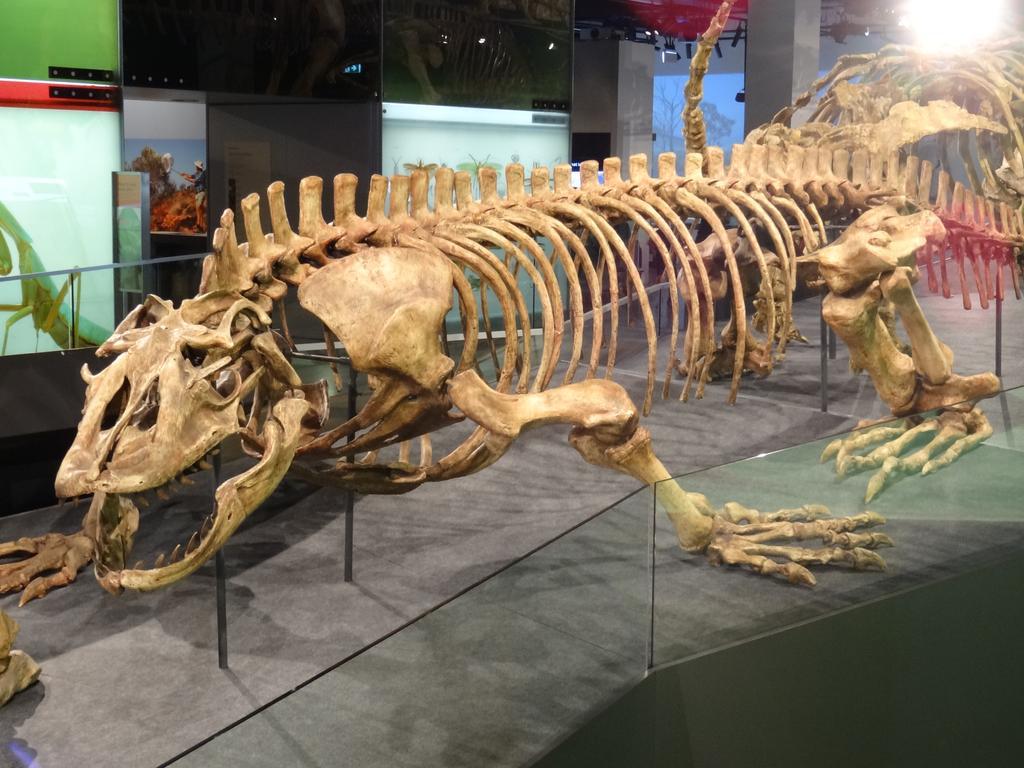
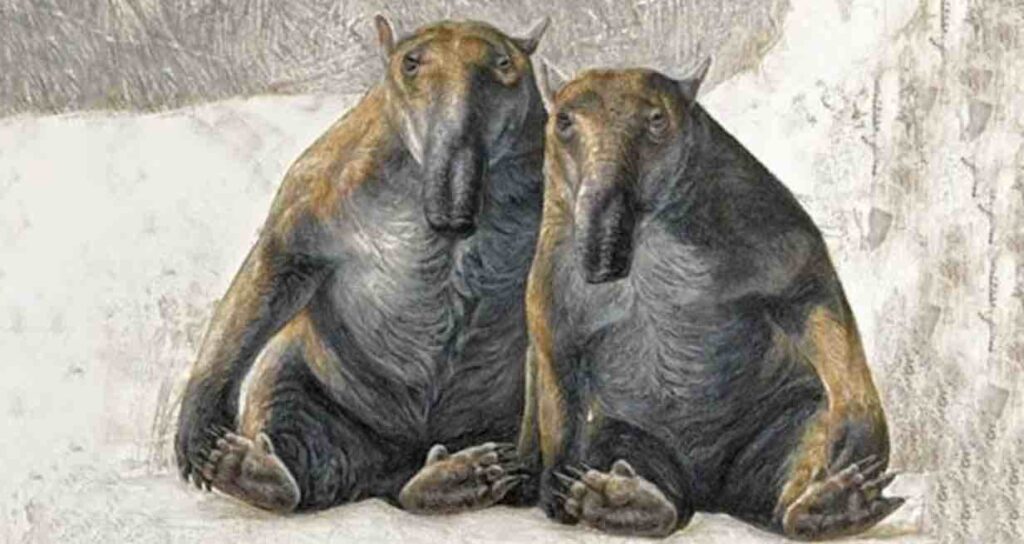
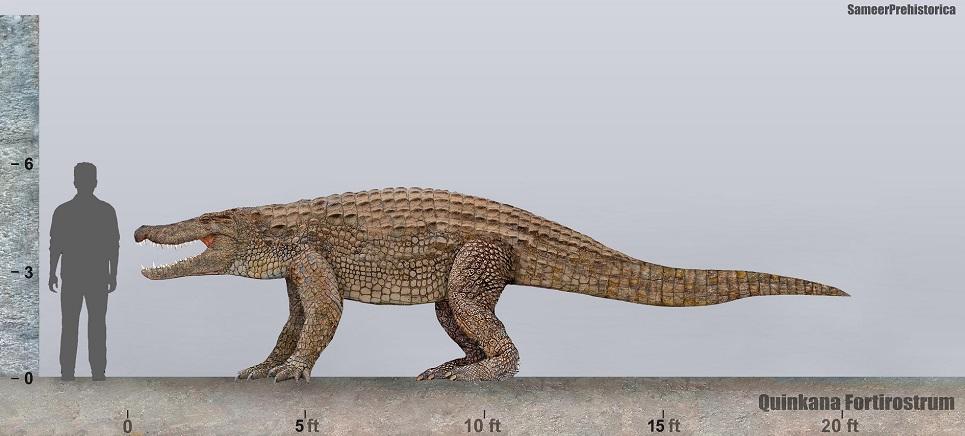
No mention of Australian wildlife is complete without mentioning the remarkable number of venomous animals that inhabit the down under. From the time you get off the Dornier that brings you from Antarctica, until you board the one that will take you to Indonesia, you are advised not to pick up, pet, or even touch any living thing. Starting with the snakes, which Australia has deadly snakes both on land and in the sea, the three most venomous snakes on earth are all native to Australia. You can also be poisoned by fish, spiders, jellyfish, octopus, and even snails.
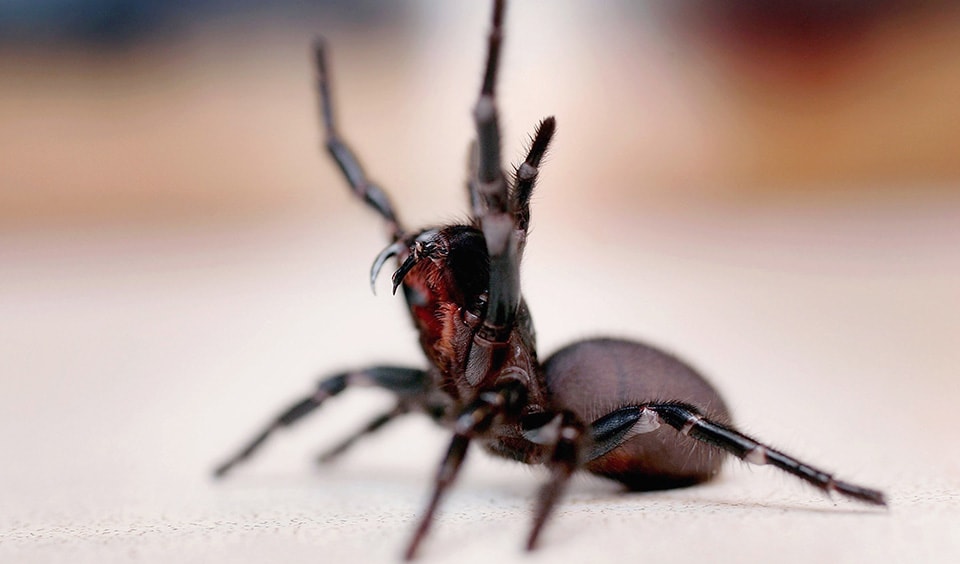
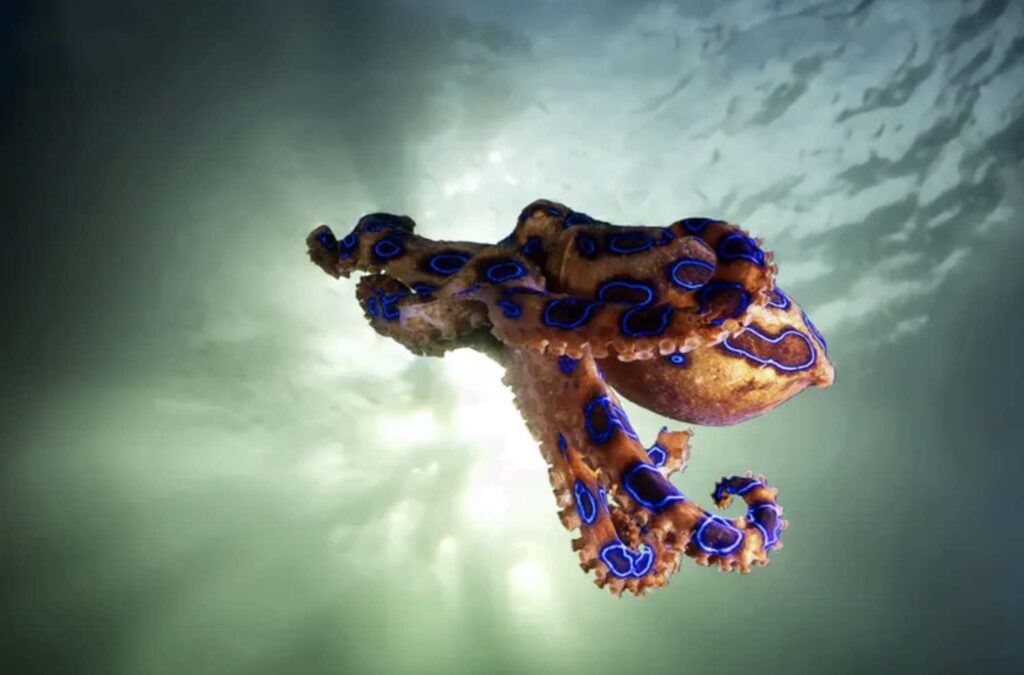
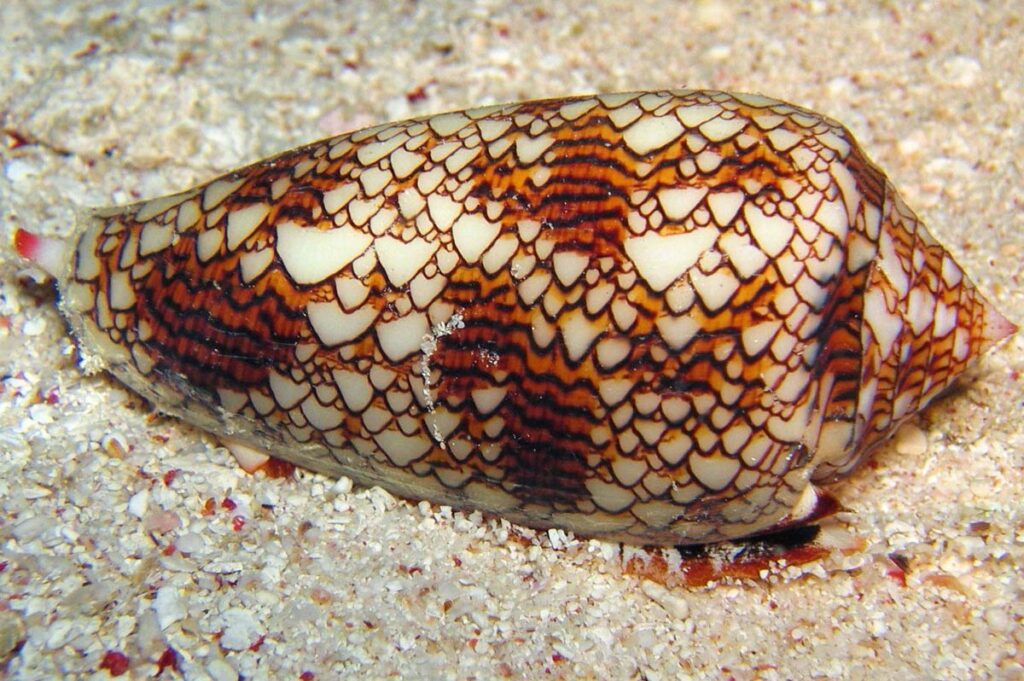
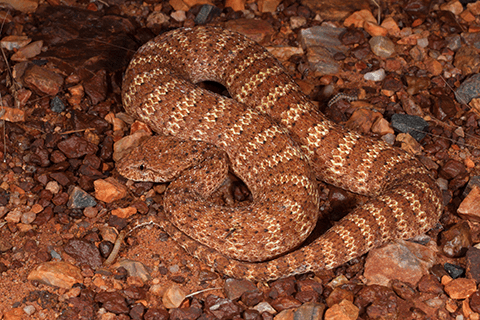

All of these are among the most venomous animals in the world…. But the single animal whose poison kills the most humans every year does not even make the list. The biggest killer in Australia is the Jack Jumper Ant. Their venom is not that potent, but they are aggressive, they are everywhere, and their sting can cause anaphylactic shock. You need to carry your epipen for possible ant stings.
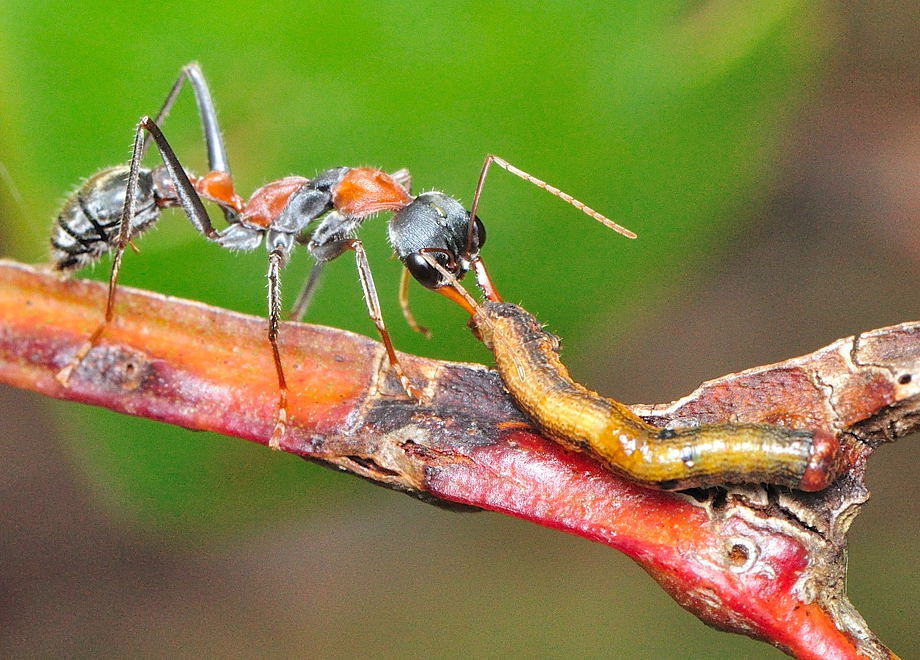
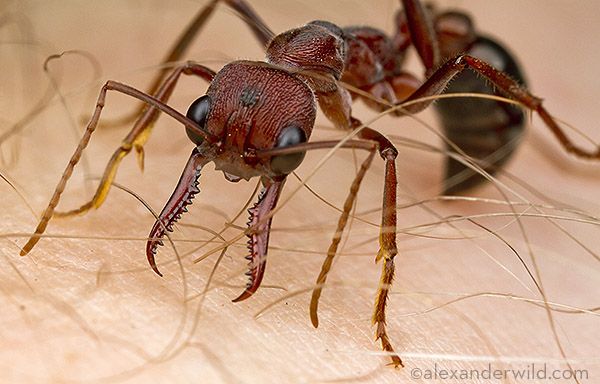
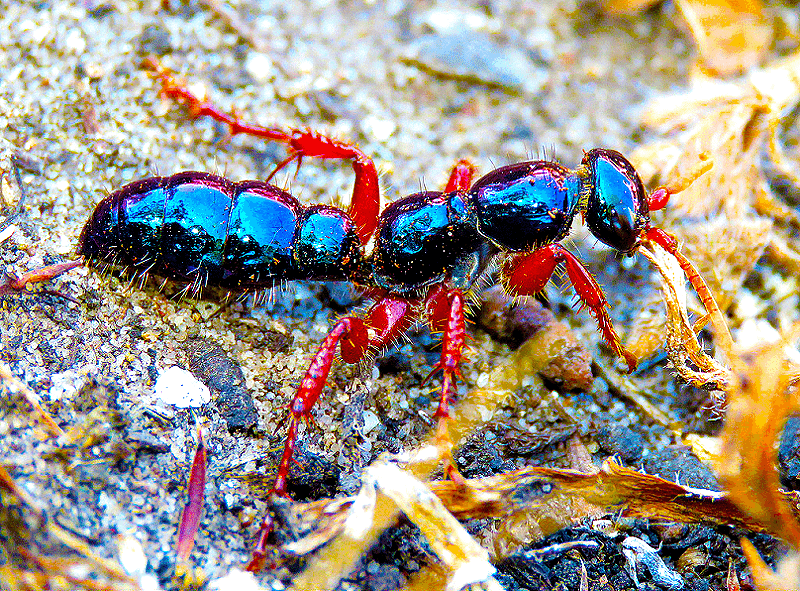
Now we finally get to the meat of this travel Guide; your actual journey. Your Dornier will cruise past Whale Lookout to get you within reach of taking the launch to Cockle beach…
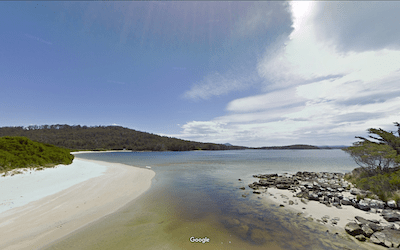
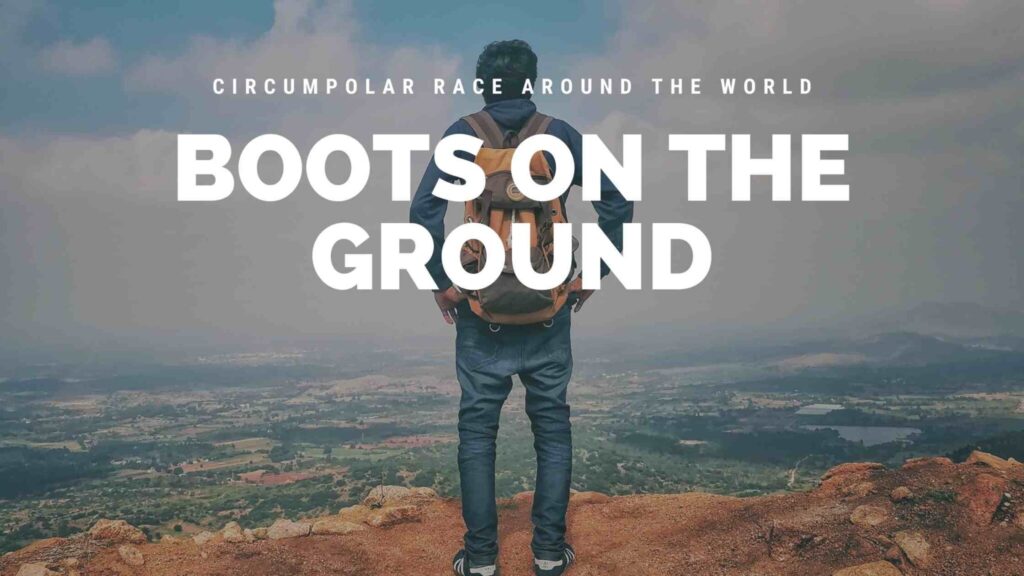
We are counting on those of you who reside or have visited these places
to enrich our file of pictures, information, and stories about the places we are visiting. Anything is fair game: Geology, History, unique places to visit, quirky local customs, you name it. We call this part “Boots on the Ground“. Nobody really knows a place better than someone who has their boots on the ground.
If we all share what we know, we can all have quite a journey around this planet. Don’t be shy. If there is one thing I have learned, it is that everyone I meet knows something that I don’t know. Your perspective will make everyone’s trip more enjoyable.
Please share your stories in the comment section below.
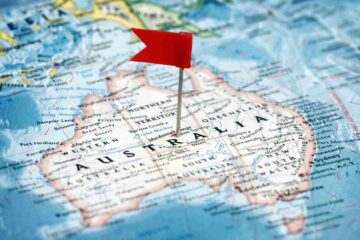
“Aborigine” is what colonial Europeans called the indigenous people of Australia and therefore the term is offensive, much like the offensive labels that Americans from European origins have applied to indigenous people of North America, i.e., “redskins,” “braves,” “squaws,” etc.